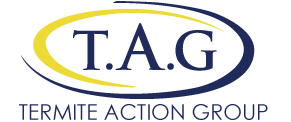Termites can go around ant caps but the ant cap pushes the termite movement out from the stump to the perimeter of the ant cap where it is able to be viewed and subsequently treated. An ant cap is not able to stop termites, but is able to expose termite movement to visual inspection.
The problem is that where an ant cap is used it generally provides an extensive inspection area, whereas this is seldom the case in relation to ‘slab on ground construction’.
Physical systems could be accurately described as “giant ant caps” with minimal inspection zones. When termite movement is observed, chemical intervention is invariably required.
The major difference between physical and chemical barriers is that physical barriers are passive or inactive and simply deflect or redirect movement to where chemical intervention can take place. Chemical barriers should be considered as aggressive or active barriers that when properly installed should kill and/or repel termites.
Physical barriers should be considered as secondary systems and not primary systems. Physical barriers are horizontal fences that termites can surmount with minimal effort and often-times without detection. They do not repel and/or kill termites and require the use of chemical when they come into contact with termites.
It is very important to choose an appropriate form of defence for your home prior to construction. Many systems provide a ten year warranty and yet are installed integrally in the construction of a home as a permanent defence against termites.
A major problem remains the building industry’s refusal to accept the appropriate cost associated with proper termite management.
Any informed pest manager with no vested interest would advise a homeowner that a good defence against termites is an undisturbed chemical barrier treatment around the perimeter of a home.
Importantly, the barrier needs to have a soil medium (generally a sandy loam with fine sand) with good consistency that is able to assist lateral spread and bonding of the chemical which must be applied at the proper rate to an appropriate soil medium.
Although physical monitoring systems and chemical barriers can be used together as termite defence, chemical barriers should be considered as primary barriers because they have the ability to repel and/or kill termites.
All barriers and monitoring systems should only be considered as defence and not as ‘protection’. The word ‘protection’ invokes a state of continued safety and belies the need for constant vigilance and maintenance, inclusive of the inspection process.
Perhaps the best way of explaining this is by using an analogy relating termites to a disease. As a potential victim of the termite disease, we have two clearly defined choices.
In the first instance, we have the choice of prevention through inoculation which equates to placement of chemical barrier system or timber treatment system to prevent the disease entering our home.
The second choice is to cure the disease after it has attacked, so that we treat the disease with chemical through expensive methodologies that may include drill and injection, baiting, dusting, etc., which still require the application of chemical and generally result in far greater costs, damage and diminished value of the home.
This is obviously a prime example of the old adage,
“Prevention is better than Cure”
To provide termite management systems to a home during the construction process is far less expensive and much more effective than the provision of termite management systems to a home after completion of construction.
Termite management systems generally require to be integrated into the construction of a home, so it is important to address these issues at the less expensive front end of the construction process.
Other methodologies include the use of termite resistant materials such as L.O.S.P. treated timber, steel or the application of certain borate products.
The use of the term ‘termite resistant’, as opposed to ‘termite proof’ is necessary to accurately describe the function of most of the above listed products.
Steel frames that many might consider to be ‘termite proof’ can suffer extraordinary damage when termites devour surrounding materials, such as timber door surrounds and paper on gyprock, and then proceed to defecate waste materials onto the steel frame.
The acrid termite faeces, which is partially composed of formic acid, reacts with the galvanised frame in a negative manner causing fissure and corrosion to occur which often reacts extensively throughout a steel frame. The soldier caste of some termite species releases acrid acids from its head as a defence against ants which also reacts against the metal frame.
The ‘tie-down’ on steel frames is achieved in the bottom plate as opposed to timber frames where threaded steel rods tie-down the top plate. The movement of termites over several steel studs and “A & K” bracing can cause a loss of tie-down and structural integrity in steel frames!
Captions for pictures
- A series of ant caps along the outer bearer line of a house.
- An ant cap under pressure with mudding from termites as they search for a way to access the building timbers.
- An ant cap where the termites have gone over the ant cap and sent leads along the bearer and up on to the floor joists.
- An appropriately installed chemical trenching treatment acts as a moat in preventing termite ingress.
- Steel frames are termite-resistant, but are certainly not termite-proof. Termites have been known to break down steel frames.






